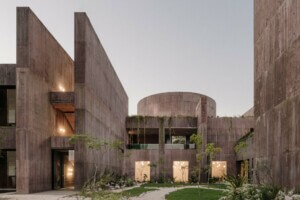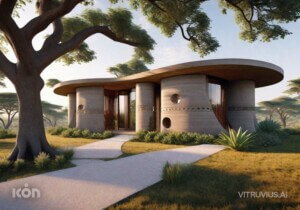The Cambridge, Massachusetts–based practice Matter Design, directed by Brandon Clifford and partners Jo Lobdell and Wes McGee, is rethinking what performance and sustainability mean in architecture.
“In the past few years the conversations we were having were falling outside of the conventional discipline of architecture,” Clifford said. “If you start to talk about sustainable building practices, it’s difficult to have that conversation, because the domain of architecture is restricted to the form and materials of the built artifact, but it’s not within our domain as architects to think about the sourcing of the materials, the transportation, the logistics of assembly, or the demolition of those buildings.” Matter began to consider the life and afterlife of the materials it used from the beginning of the design process—and from an unexpected angle: “It became clear to us that we should start engaging this other side of practice, which has to do with performance, theatricality, and play as ways of interrogating why it is that we’re building the way that we do.”
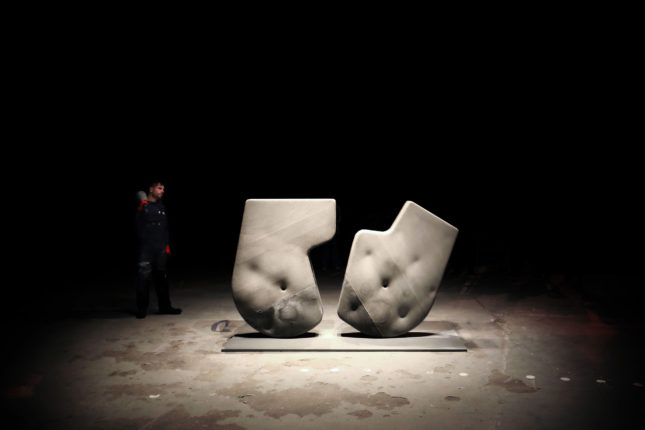
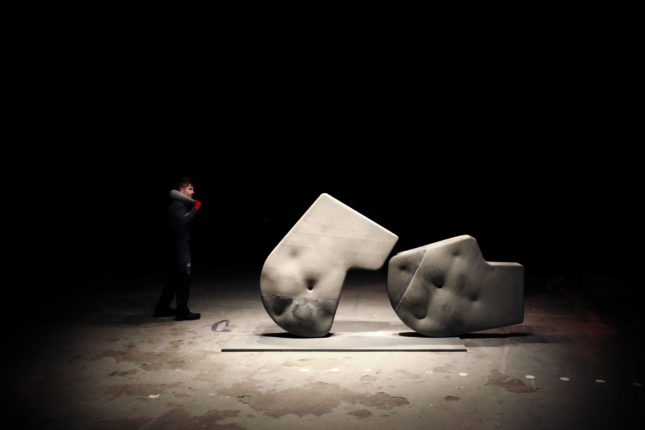
In this vein, the installation Walking Assembly, made of a series of massive masonry units designed with the Mexican building materials company CEMEX, uses mobility and performance to explore sustainability. “We’re thinking about creating artifacts that are easy to assemble—which means they’re also easy to disassemble, so that they’re not relegated to landfills,” Clifford said about the project, which won an honorable mention in The Architect Newspaper’s 2019 Best of Design Awards.
The seeming simplicity of Walking Assembly’s shapes—reminiscent of Incan or Rapa Nui megaliths or the sculptures of Isamu Noguchi—belies the complex operations required to realize such mobile forms. “We’ve had to engage in a number of experiments that have challenged us,” Clifford said. “We do a lot of physical prototyping. We also work through computation strategies.”
Matter is taking what the studio has learned working on Walking Assembly to a new project with a playful and personable name: Patty & Jan. The project, which debuted at the University of Michigan in November, features two interlocking forms that are made of custom variable density concrete designed by CEMEX Global R&D and resemble those of Walking Assembly. Patty and Jan—the names of the two blocks—look like the letters P and J; they balance and bounce into one another, turning construction into a performance realized by the materials themselves. Matter describes the pair as enacting a type of construction that prioritizes curiosity, joy, wonder, and whimsy rather than just economy and efficiency. Patty and Jan build themselves, so humans are “liberated” to play with them.

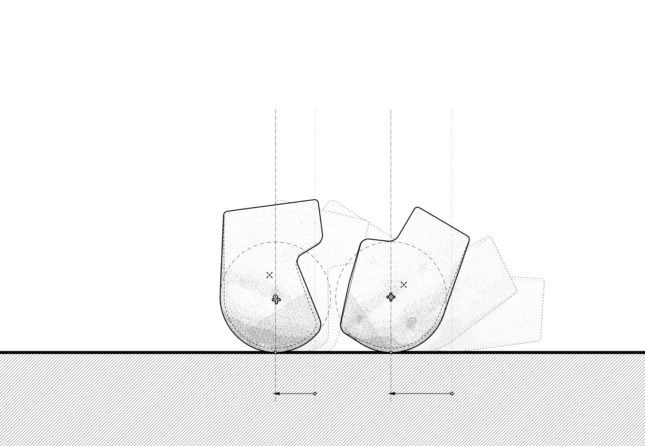
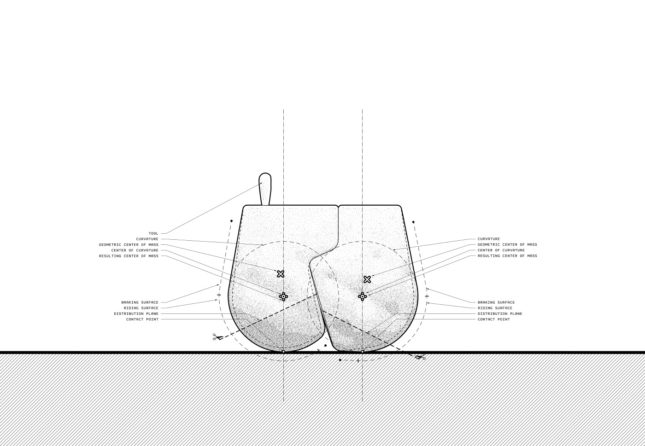
“One of the things we were thinking about was deployability, so that if you have a precast element on the back of the truck, it can show up to the site, and you can release that mechanism, and it can roll off the truck and position itself with some intelligence,” said Clifford. “Patty & Jan was an exercise of letting the elements do the work themselves as opposed to being guided by the direct contact of humans.”









